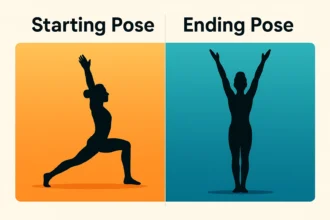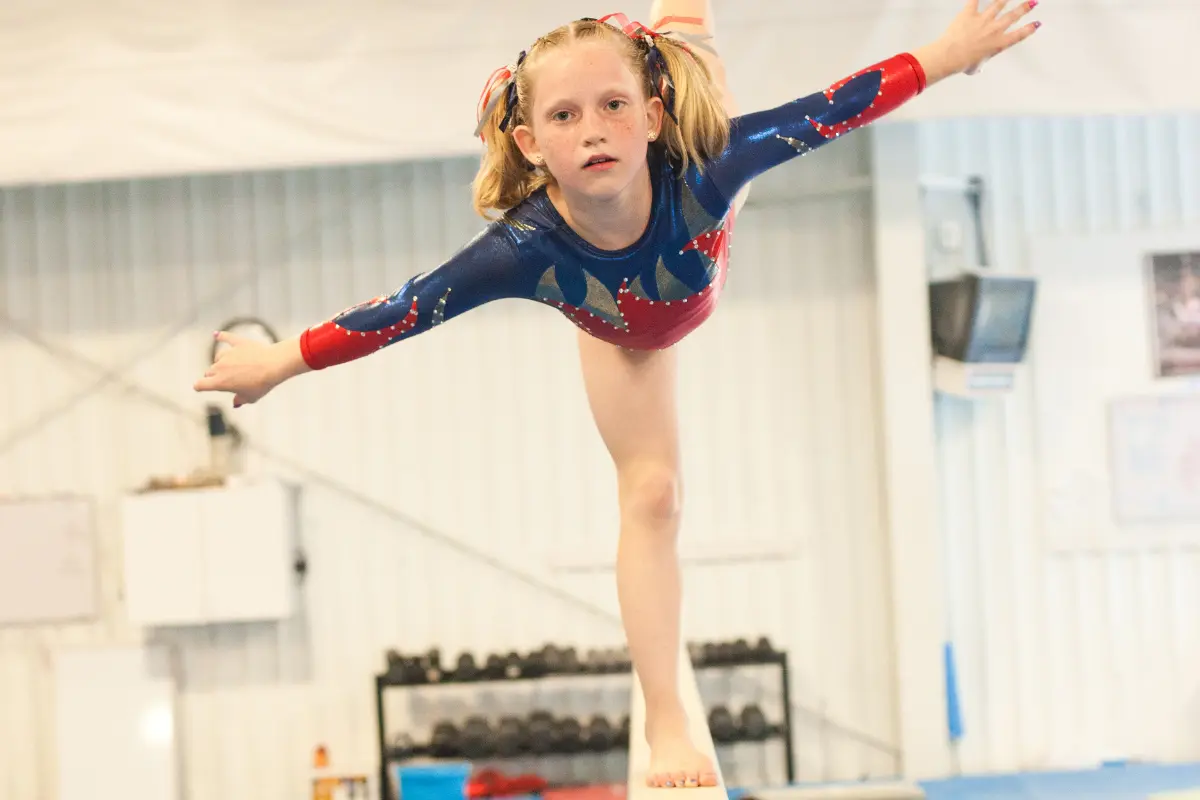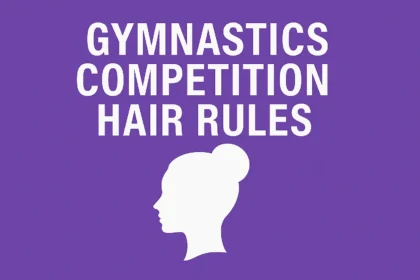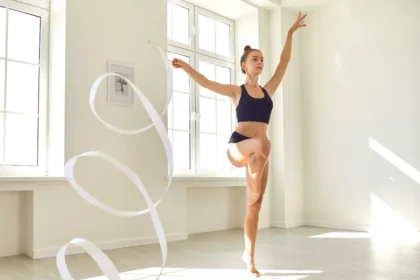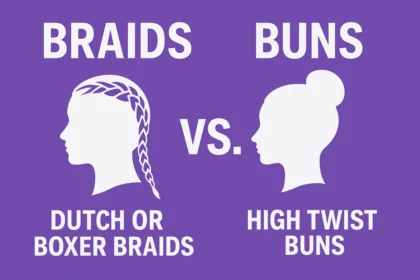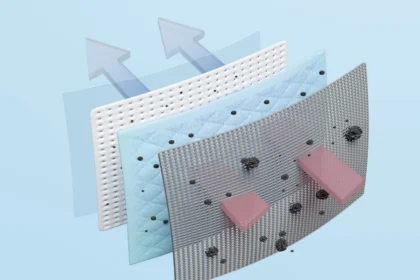The Xcel Program, developed by USA Gymnastics, offers a flexible competitive pathway for gymnasts of varying abilities and commitment levels.
Xcel is ideal for gymnasts who:
✔ Want to compete without the intense hours required by the JO (Development) Program.
✔ Prefer creative, individualized routines over compulsory scripts.
✔ Enjoy the sport recreationally but still seek competitive opportunities.
As of 2025, the Xcel program consists of six competitive divisions, arranged in ascending order of difficulty:
| Division | Overview |
|---|---|
| Bronze | Entry-level for beginners learning foundational skills. |
| Silver | Builds on basics with more polish and control. |
| Gold | Introduces flight and basic saltos. |
| Platinum | Focuses on power, connections, and harder acro elements. |
| Diamond | High-level difficulty including twisting vaults and advanced dance-acro. |
| Sapphire | Newly launched nationwide in 2025; bridges Xcel and JO Levels 8–10. |
Minimum Age and Entry Requirements
Each Xcel level has a minimum age and progression requirement to ensure athletes are physically and technically prepared.
| Division | Minimum Age Requirement | Entry Requirement | Equivalent JO Levels |
|---|---|---|---|
| Bronze | 5 years old | None | Levels 1 & 2 |
| Silver | 6 years old | None | Levels 1, 2, 3 |
| Gold | 7 years old | 31.00 AA at Silver or 8.0 IES* | Levels 3 & 4 |
| Platinum | 8 years old | 31.00 AA at Gold or 8.0 IES* | Levels 5, 6, 7 |
| Diamond | 9 years old | 31.00 AA at Platinum or 8.0 IES* | Levels 7 – 10 |
| Sapphire | 12 years old | 34.00 AA at Diamond or 8.5 IES* | Levels 8 – 10 |
- AA (All-Around) – A gymnast’s total score across all four events (Vault, Bars, Beam, Floor).
- IES (Individual Event Specialist) – Gymnasts can qualify for the next level by achieving a set score on a single event, even if their total AA score is lower.
- JO Gymnasts can transition to Xcel at a comparable level based on previous scores.
Detailed Skill Requirements for Each Xcel Level
Here’s a detailed Level Breakdown of all Xcel Gymnastics Divisions (Bronze through Sapphire), based on the 2022–2026 Xcel Code of Points.
| Level | Vault | Bars | Beam | Floor |
|---|---|---|---|---|
| Bronze | Jump/kick to handstand flat back | 4 A’s; cast; 360° circle; low bar dismount | ½ turn, 60° leap, non-flight acro, simple dismount | 2 acro (no flight), 2nd pass acro, 60° leap series, ½ turn |
| Silver | Handspring or ¼–½ on repulsion | 5 A’s; cast ≥45°, 360° circle, low/high bar dismount | ½ turn, 90° leap, non-flight acro, any dismount | 2 acro passes (1 with flight), 90° leap series, full turn |
| Gold | Handspring, Yamashita, or ½-on ½-off | 6 A’s; cast to horizontal, B circle, non-salto dismount | Full turn, 120° leap series, 2 acro (1 through vertical), dismount | 2 flight acro, salto or aerial, 120° leap series, full turn |
| Platinum | Handspring fulls, twisting vaults (SV 9.90–10.0) | 5 A + 1 B; cast above horizontal, kip, B circle, HB dismount | Full turn, dance series, acro series, salto dismount | 2 flight acro (1 salto), 2nd pass w/ 2 acro or B salto, dance series, full turn |
| Diamond | Handspring full, Tsuk tuck, layout Yurchenko | 5 A + 2 B; ≥45°, B circle, B release/pirouette, salto dismount | Full turn, 150° dance series, flight acro series, salto dismount | 2 saltos (1 B), 2nd pass: 2 acro or B salto, dance series, full turn |
| Sapphire | Yurchenko layout/full, Tsuk tuck | 3 A + 3 B + 1 C; cast to vertical, B circle, B release, B/C dismount | Full turn, 180° dance series, flight acro series, B dismount or flight+A salto | 3 saltos (1 B), 2 connected saltos, 180° dance series, B turn |
🟤 Bronze Division
Bronze is the entry point into Xcel competition. At this level, routines focus on safe movement, clean form, and building confidence.
Vault
Gymnasts choose between two basic vaults: a stretch jump followed by a kick to handstand flat-back (SV 9.0), or a jump straight to handstand flat-back (SV 10.0). Both are performed onto a mat stack between 16–48 inches with a sting mat behind. If an alternate springboard is used, the Start Value drops to 9.5.
Uneven Bars
Routines stay entirely on the low bar. Required elements include a pullover mount, a cast where the hips leave the bar, a 360° circling skill (like a back-hip circle), and a basic non-salto dismount. Clear-hip casts are allowed, but amplitude isn’t judged yet.
Balance Beam
The beam routine is limited to 45 seconds. It includes a half turn on one foot, a leap or jump with a 60° split, a non-flight acro skill, and a simple dismount. The focus is on stability and basic control.
Floor Exercise
Floor routines must stay under 45 seconds. They include two connected acro skills in the first pass (flight optional), a second acro pass, a dance passage with two different jumps or leaps (one with a 60° split), and a half turn. Saltos and aerials are not allowed.
🔘 Silver Division
Silver builds on the basics, encouraging better form and introducing slightly more complex elements.
Vault
Silver gymnasts can perform a handspring over a sideways mat stack or a ¼ to ½ twist onto the stack followed by a repulsion to the feet. Both are valued at 10.0 if performed with a regulation springboard. Using an alternate board lowers the Start Value to 9.5.
Uneven Bars
Five A-level skills are required. These include a cast that rises to at least 45° below horizontal, a 360° circling skill, and a non-salto dismount. Skills can now be performed on either the low or high bar. While B-level acro skills are not allowed, B-level dance skills (like a full turn) are permitted.
Balance Beam
Beam routines can be up to 50 seconds. Gymnasts must perform a half turn, a leap or jump with at least a 90° split, a non-flight acro skill, and any dismount. No saltos are allowed, but B dance elements are welcome.
Floor Exercise
The floor routine can last up to one minute. It must have two tumbling passes, each with at least two elements—one pass must include flight. A dance passage must include two different jumps or leaps (one with a 90° split), and a full turn on one foot. Saltos are still restricted.
🟡 Gold Division
Gold introduces flight skills and basic saltos, requiring more connection and flow between elements.
Vault
Gold is the first level to use the standard vault table. Vault options include a front handspring, a quarter-on Yamashita, or a half-on half-off, all valued at 10.0. Alternate springboards reduce the Start Value to 9.5.
Uneven Bars
Six A-level skills are needed. The cast must reach horizontal, and one B-level 360° circling skill (like a clear-hip circle) is required. Routines also need a non-salto dismount from either bar. Bar transitions may appear but aren’t required.
Balance Beam
The routine can be up to 60 seconds. Gymnasts must show a full turn, a dance series with two different leaps or jumps (one with a 120° split), and two acro skills—one of which must pass through vertical. The dismount must be simple (no salto).
Floor Exercise
Saltos are now allowed. The first pass must include two connected flight elements. The second pass must include at least one aerial or salto. The dance passage should feature two different leaps or jumps (one with a 120° split), and a full turn. C-level acro or twisting saltos are not permitted.
🟣 Platinum Division
Platinum routines look more like those seen in optional levels of the Development Program. Gymnasts are expected to connect elements smoothly and show stronger acrobatics and artistry.
Vault
Vaults at this level become more dynamic. Gymnasts can perform handspring fulls or other twisting vaults. Most vaults still have a Start Value of 10.0, but some twisting vaults start at 9.90. A regulation springboard is required—using an alternate board will VOID the vault. A 2025 update removed the previous 0.50 deduction for vaulting without a Chief Judge signal.
Uneven Bars
Platinum bar routines must include five “A” skills and one “B” skill. Required elements include a cast above horizontal, a kip, a 360° circling skill, and a dismount from the high bar. Execution becomes more important, and if the cast falls short of angle, a 0.10 deduction is applied. Giants and clear-hip handstands can be introduced but are not mandatory.
Balance Beam
The beam routine must show a full turn, a dance series (like two connected leaps or jumps), an acro series (flight optional), and a salto dismount. B and C dance skills are allowed. C acro skills, however, are still not permitted.
Floor Exercise
Floor routines must include two connected flight elements in the first pass, with at least one salto. The second pass must include either two acro skills or a B-level salto. A connected dance series and a full turn are also required. No bonus is awarded at this level, and C-level acro or twisting saltos are not allowed.
💎 Diamond Division
Diamond is the highest of the original Xcel levels. It challenges gymnasts to combine power and precision while maintaining the creativity that defines Xcel.
Vault
Gymnasts at this level perform advanced vaults such as handspring fulls, layout Yurchenkos, and Tsukahara tucks. Only a regulation springboard is allowed—using a trampoline-style board voids the vault. Judges now expect stronger technique, body control, and height.
Uneven Bars
Diamond bar routines must include five “A” and two “B” skills. One optional “D” skill may be included but earns no bonus. The cast must finish within 45° of vertical. A B-level 360° circle and either a B-level release, pirouette, or second circling skill are required. The dismount must be a salto or hecht from the high bar. E-level skills are not permitted.
Balance Beam
Beam routines must include a full turn, a dance series with a 150° split, a flight acro series, and a salto dismount. Only one D skill is allowed. Judges evaluate rhythm, use of space, artistry, and control. At this level, judges must hold at least a Level 9 rating.
Floor Exercise
Routines must show two connected saltos (one must be B-level), a second pass with either two acro skills or a B-level salto, a dance series, and a full turn. Only one D skill is allowed, and E-levels are prohibited. Choreography and expression are important scoring factors.
🔸 Sapphire Division (Fully Launched in 2025)
Sapphire is the most advanced Xcel level, launched nationally in 2025. It was designed for experienced athletes—especially former Development Program gymnasts or strong event specialists—who want a competitive option that blends Xcel freedom with JO-level difficulty.
Vault
Sapphire gymnasts perform high-level vaults such as Yurchenko layouts, fulls, and Tsukahara tucks. A regulation springboard is required. These vaults are judged like those in the Development Program, with a focus on form, height, and difficulty.
Uneven Bars
Bar routines must include three “A,” three “B,” and one “C” skill. The cast must reach vertical. The routine must also show a B-level 360° circle, and either a B release, a pirouette, or another circle. The dismount can be a B-level element or a C skill directly connected to an A-level salto. Casts more than 10° from vertical receive a 0.10 deduction; those more than 20° off lose Special Requirement credit.
Balance Beam
Beam routines must include a full turn, a 180° split dance series, a connected flight acro series, and either a B-level dismount or a flight skill connected to an A-level salto. Routines start from a 9.6 but can earn up to 0.4 in bonus for high-level connections.
Floor Exercise
On floor, gymnasts must show three different saltos (one must be B-level), and at least one pass must include two connected saltos. The dance passage must show two Group 1 elements with a 180° split, and the routine must include a B-level turn. Like beam, routines start at 9.6 and can reach 10.0 through connection bonus. E-level skills are not allowed.
How Scoring Works in Xcel
All routines in the Xcel Program are evaluated using a Start Value (SV) system out of 10.0, adjusted based on what the gymnast includes (or omits). To earn a 10.0 SV, a routine must contain:
- ✅ The required Value Parts (VPs)
- ✅ All four Special Requirements (SRs)
- ✅ Only skills within the allowable difficulty for the level
Missing a Special Requirement results in a 0.50 deduction from the Start Value. Performing a restricted skill makes it VOID—earning no credit and potentially resulting in a zero for that event.
Value Parts (VPs)
Skills are rated as:
- A = 0.10
- B = 0.30
- C = 0.50
- D = 0.70
| Division | VPs Required |
|---|---|
| Bronze | 4 A’s |
| Silver | 5 A’s |
| Gold | 5 A’s + 1 B |
| Platinum | 5 A’s + 2 B’s |
| Diamond | 4 A’s + 3 B’s |
| Sapphire | 3 A’s + 3 B’s + 1 C |
🔹 Special Requirements (SRs)
On Bars, Beam, and Floor, each routine must contain 4 SRs—specific skill categories such as a cast, leap series, acro flight, or salto dismount. Vault uses a list of approved skills instead.
- Bronze–Gold: SRs remain basic and safe
- Platinum–Diamond: SRs become more technical and connected
- Sapphire: SRs mirror JO Level 8–10 standards
Missing an SR deducts 0.50 from Start Value.
🔹 Skill Difficulty Limits
To maintain fairness and safety, each level limits which skill difficulties are allowed:
| Division | Skill Cap |
|---|---|
| Bronze & Silver | No saltos, aerials, or vault table use |
| Gold | Allows saltos on floor (no C or twisting) |
| Platinum | Allows aerials, saltos, basic release moves |
| Diamond | D-level acro allowed; no E skills |
| Sapphire | C skills required; bonus allowed; no E skills |
Comparison to the JO (Junior Olympic) Program
The Xcel Program and the Junior Olympic (JO) Program—now officially called the Development Program—are both competitive tracks under USA Gymnastics, but they serve different purposes. While the JO track is more structured and geared toward high-level training, Xcel offers a more flexible and customizable approach that allows gymnasts to thrive with less time commitment and more creative freedom.
Below is a side-by-side comparison that outlines their key differences:
Xcel vs. JO Gymnastics Chart
| Category | Xcel Program | JO (Development) Program |
|---|---|---|
| Purpose | Flexible, inclusive, and lower time commitment | Structured, progressive track toward elite or college gymnastics |
| Structure | 6 Divisions: Bronze → Sapphire | 10 Levels: Level 1–10 (Levels 1–5 compulsory; Levels 6–10 optional) |
| Routine Type | Optional-style routines at every level | Compulsory routines (Lv 1–5), Optional routines (Lv 6–10) |
| Time Commitment | Lower; typically 4–12 hours/week | Higher; often 15–25+ hours/week |
| Cost | More affordable due to fewer training hours and travel | Generally more expensive due to intense training, meets, and coaching |
| Scoring System | Based on Value Parts (A–C), Special Requirements, and Start Value of 10.0 | Uses Difficulty (D-Score) + Execution (E-Score); complex bonus and composition rules |
| Creativity | High—routines are tailored to individual strengths | More standardized in lower levels; creativity increases at optional levels |
| Mobility | Coaches determine level movement based on skill readiness | Advancement depends on achieving a set all-around score (usually 34.00–36.00) |
| Best For | Multi-sport athletes, late starters, or gymnasts seeking balance and fun | Dedicated athletes pursuing high-level competitive or college gymnastics |
Key Differences:
- Xcel allows more customization, while JO has strict skill progression.
- Xcel gymnasts can compete at a high level with fewer training hours.
- The JO program is the pathway to elite gymnastics, while Xcel provides a more balanced approach.
In summary, for athletes seeking a competitive yet less time-intensive path, Xcel is an excellent option. It allows gymnasts to grow, compete, and enjoy the sport without the pressure of elite-level demands. For those with aspirations of college recruitment, national competition, or elite training, transitioning into JO Levels 8–10 may be the best fit.



